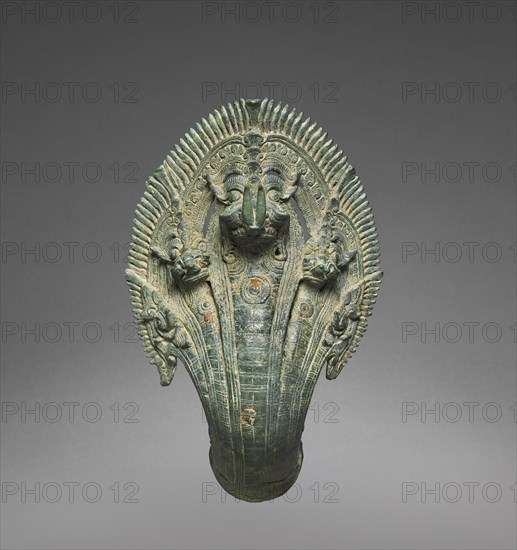
Sujet
Naga Finial, 1100s. Creator: Unknown.
Légende
Naga Finial, 1100s. When members of the royal family or priesthood traveled in a public festival procession or to a temple like Banteay Chhmar to make offerings or participate in a ceremony, they would be carried in a palanquin, or a covered litter. Portable objects of veneration, such as bronze images or a sacred fire, were also carried on palanquins. The palanquins had wooden poles, hanging seats or raised platforms, and bronze fittings cast in intricate forms and gilt, lending the palanquins a sumptuous quality. The royal palanquins were typically fitted with multiheaded, serpent-shaped finials at the ends of the poles and corners of the elevated platforms. Naga means serpent in Sanskrit, a language from India selectively appropriated by the Khmer in Cambodia. In their own indigenous mythology, the Khmer people trace their descent from a naga princess and a prince from the island of Java who journeyed to Cambodia. The naga remains a potent emblem for the Khmer nation to this day; it is ubiquitous on Cambodian monuments.
Crédit
Photo12/Heritage Images/Heritage Art
Notre référence
HRM19F95_018
Model release
NA
Property release
NA
Licence
Droits gérés
Format disponible
43,8Mo (2,7Mo) / 32,2cm x 34,1cm / 3798 x 4033 (300dpi)